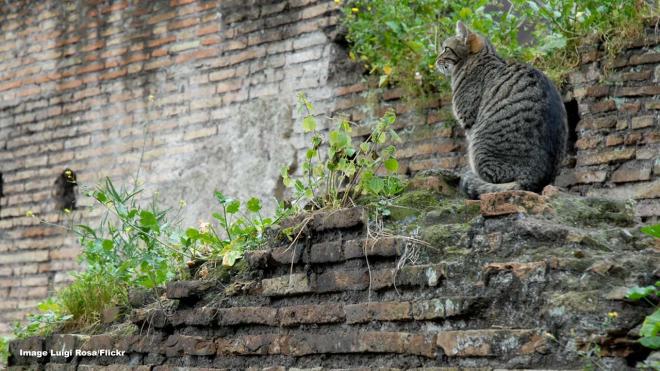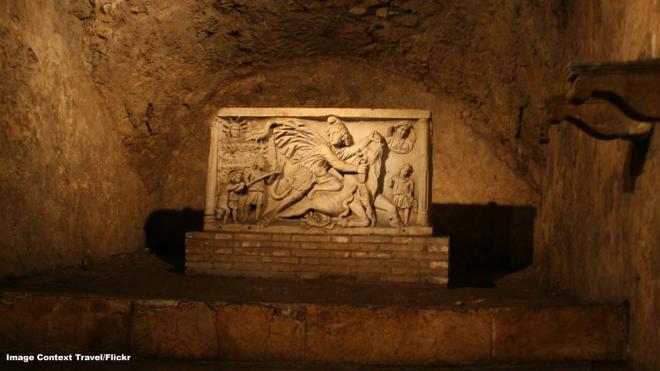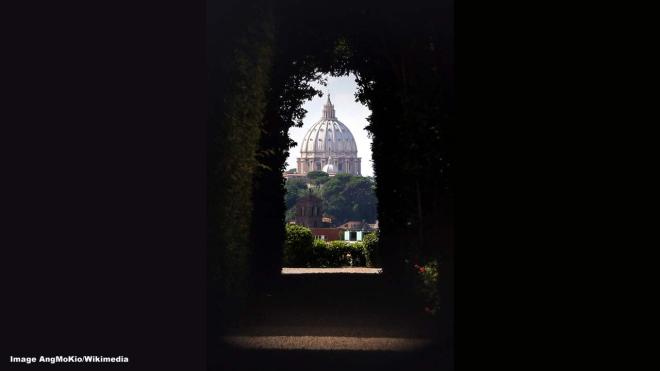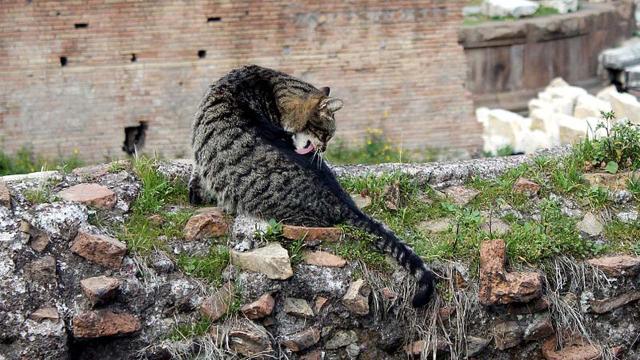Rome is well-known for its many attractions and sights, including the Colosseum, the Trevi Fountain, St. Peter’s Basilica and the Pantheon. The Italian city also has a more hidden side, known well to the Romans, but not so overcrowded with visitors to the city.
The following are five such places in Rome, Italy, including an unlikely cat sanctuary, an ancient lie detector which featured in a Gregory Peck and Audrey Hepburn film, an underground temple of a mysterious cult, the skull of St. Valentine and an unusual keyhole with a view.
Torre Argentina Roman Cat Sanctuary, 1-41 Via di Torre Argentina, Rome, Italy
Among the ruins where Caesar saw his end, dozens of cats are having much better luck. The site is Largo di Torre Argentina, which was excavated when Mussolini began rebuilding the city in 1929. Workers found four Republican victory temples lying 20 feet under the ground. It also contains a portion of the famous Pompey portico on the steps where Julius Caesar was killed in 44 BCE. Nowadays, volunteers care for around 130 feral cats. This is one of several cat colonies in Rome.

The Mouth of Truth, Piazza della Bocca della Verità 18, Rome, Italy
Bocca della Verità, or Mouth of Truth, is an ancient lie detector. According to superstitions, if a liar puts their hand into the mouth on the frieze, that hand will then be bitten off. The stone disc dates back to around the 1st century CE and no one is sure why it was created. Some say it is a ceremonial well cover or decoration, but others say it represents the face of a pagan god. It featured in an amusing scene in the 1953 film “Roman Holiday” with Gregory Peck and Audrey Hepburn.
The Mithraeum at Circus Maximus, Piazza Bocca della Verita 16, Rome, Italy
The Mithraeum temple at Circus Maximus is one of the largest of its kind in Rome and was hidden next to the Circus Maximus. The temple was found in 1931 and is underground believed to be dedicated to a mysterious cult of the god Mithras between the 1st and 4th centuries. Little is known about the cult, but their main imagery is that of Mithras slaying a bull found in most of the temples. The cult finally died out at the end of the 4th century when Christianity took hold.

St. Valentine's Skull, 1 Via della Greca, Piazza della Bocca della Verità, Rome
There is a skull, residing in a glass reliquary inside a small Roman basilica and decorated with flowers. The forehead of the skull bears the lettering St. Valentine, which could mean it is the skull of the patron saint of lovers himself. This is not certain, as there were several saints with the name Valentine, with 1,500 years between their deaths and Atlas Obscura says there are around 10 places in the world claiming to house his remains. It's a nice thought, though.

The Aventine Keyhole, Piazza dei Cavalieri di Malta 3 Rome, Italy
We all know it’s rude to peep through keyholes, but there are some exceptions. There is a nondescript green door in a cul-de-sac in Rome that holds a semi-secret. When peering through the keyhole, you get a perfectly framed view of the dome of St. Peter’s. The door is in the Priory of the Knights of Malta and was originally the fortified palace of Alberico II who ruled Rome between 932 and 954. It was also a Benedictine monastery, ending up in the hands of the Knights of Malta.

![Torre Argentina is where Julius Caesar died, but now is home to dozens of cats. [Image Andou/Wikimedia] Torre Argentina is where Julius Caesar died, but now is home to dozens of cats. [Image Andou/Wikimedia]](https://staticr1.blastingcdn.com/media/photogallery/2018/11/24/660x290/b_502x220x82/torre-argentina-is-where-julius-caesar-died-but-now-is-home-to-dozens-of-cats-image-andouwikimedia_2151113.jpg)


